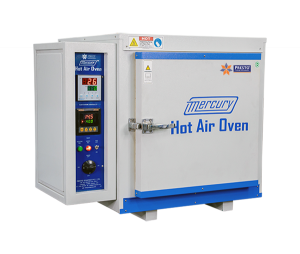The Importance of Hot Air Ovens in Quality Testing: A Comprehensive Overview
- by testinginstrument
- September 24, 2024
A hot air oven is one of the most widely used equipment in industries that rely on thermal treatment and sterilization. It operates on the principle of using dry heat to sterilize or test the endurance of materials at elevated temperatures. This blog delves into the significance of the hot air oven, explains its principles, and answers common questions about its use, particularly in Testing Instruments.

1. What is a Hot Air Oven Used For?
A hot air oven is primarily used for sterilization and heat treatment of products and materials. It works by circulating dry, heated air inside a chamber to remove moisture and eliminate bacteria or pathogens. This makes it essential in industries like pharmaceuticals, food processing, and medical equipment manufacturing.
Apart from sterilization, the hot air oven is widely used in testing laboratories to determine the resistance of materials to heat. This includes durability testing for plastics, metals, glass, and even electronic components that must function correctly in extreme conditions.
In Testing Instruments, a hot air oven is often used to simulate long-term exposure to heat, allowing manufacturers to improve the quality and resilience of their products.
2. What is the Temperature Range of a Hot Air Oven?
The temperature range of a hot air oven typically varies between 50°C and 300°C, depending on the model and its industrial application.
Most hot air ovens used for sterilization operate at around 160°C to 180°C. However, ovens used for material testing or drying can have a much broader range, extending to higher temperatures.
This flexibility in temperature range makes the hot air oven suitable for various applications, from drying and curing to sterilizing and material degradation studies. For specific Testing Instruments applications, it’s crucial to select a hot air oven that meets the required temperature specifications for your material or product.
3. What is the Difference Between an Autoclave and a Hot Air Oven?
Both autoclaves and hot air ovens principle are used for sterilization but operate on different principles. The key difference lies in the method of sterilization.
- Hot Air Oven: Uses dry heat to sterilize materials. The process involves circulating hot air inside the chamber, which kills bacteria and pathogens by oxidation. It is ideal for materials that can withstand high temperatures but are moisture-sensitive, such as glassware, powders, and metal instruments.
- Autoclave: Works on the principle of moist heat or steam sterilization under pressure. The autoclave is highly effective for sterilizing surgical tools, medical equipment, and textiles that can handle high humidity. Autoclaves are widely used in hospitals and laboratories for sterilizing tools quickly and efficiently.
In conclusion, if you need sterilization without moisture, a hot air oven is your best bet, while an autoclave is preferable for faster sterilization using steam.
4. Is a Hot Air Oven the Same as an Air Fryer?
While both appliances circulate hot air to achieve the desired effect, a hot air oven and an air fryer serve entirely different purposes.
- Hot Air Oven: Designed for industrial and laboratory use, it sterilizes or tests materials by using dry heat over long periods. The temperature range is higher and better controlled to meet scientific or industrial testing needs.
- Air Fryer: A consumer kitchen appliance that uses hot air to "fry" food, mimicking the effect of deep frying but with little to no oil. Its temperature control is much more limited compared to a hot air oven, and it operates on the principle of convection cooking, designed to prepare food rather than sterilize or test materials.
Thus, while both use hot air circulation, their purposes and applications differ significantly.
A hot air oven is a versatile tool in industrial and laboratory settings, essential for sterilization and material testing. It operates by circulating dry heat to sterilize or heat-treat materials, offering a wide range of temperature settings for diverse applications. Understanding the hot air oven principle is key for industries that require precise thermal testing, making it a valuable instrument in Testing Instruments. Whether comparing it to autoclaves or consumer appliances like air fryers, the hot air oven stands out for its precision and wide applicability across various sectors.